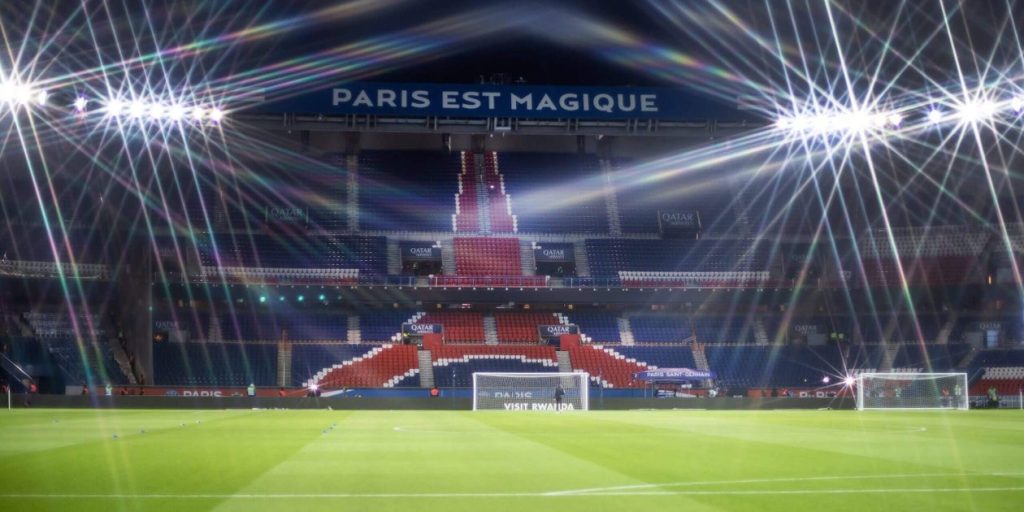Back in 1955, when European club competition was initially formed, it took the shape of the Inter-Cities Fairs Cup. This competition was designed to promote European trade fairs and maintained a strict ‘one club per city’ rule. Under that umbrella, this week’s Champions League match between Arsenal and Paris Saint-Germain (PSG) can be considered a typical event as it involves the most successful clubs from London and Paris. However, there are several intricacies involved.
Firstly, while PSG is currently the most prominent club in France, they didn’t exist in 1955. The team was constructed 15 years later. Secondly, Arsenal represents one of seven top-tier London clubs in 2024-25, often ranking behind Chelsea and Tottenham in recent seasons. In contrast, PSG has been the only major Parisian club for the past three decades. Also, the disparate average attendances of the top clubs in both cities last season underscore their contrasting approaches to club football.
In terms of sporting numerous major football clubs, London is unparalleled. While Madrid, Lisbon, Athens and Istanbul can offer up to six top-flight clubs depending on the inclusivity of city boundaries, London boasts seven. What’s more, three other London teams, namely Charlton Athletic, Queens Park Rangers and the old Wimbledon FC, have enjoyed stints in the Premier League since it was instituted in 1992. Millwall also participated in the top tier from 1988 to 1990. On the other hand, Paris only contributes a single top-tier club, a striking departure from the norm of two major clubs in large cities like Rome, Milan, and Manchester. However, French top-flight football uniquely consists of 18 teams from 18 distinct settlements, making Paris’s solitary representation the norm domestically.
Britain played a significant role in the early evolution of Parisian football clubs. Teams with English names like the ‘Standard Athletic Club and White Rovers’ emerged in the final decade of the 19th century, populated largely by British players. Football’s development in France, however, was comparatively slow, as rugby was seen as more sophisticated and had a stronger presence in schools. It was the formation of the Coupe de France in 1917 and seeing the FA Cup final in 1902 that augmented football’s development in France under the guidance of Henri Delaunay.
Historically, Paris’ club scene featured four top-tier teams when Ligue 1 was created in 1932, including Racing Club de Paris and Red Star. These four clubs struggled to gain momentum in a country where other sports like cycling, rowing, and gymnastics dominated. Football in France was not a working-class phenomenon like in England and the rivalry between urban clubs was scarce. To achieve success, most French clubs chose to merge rather than compete one another. Among the original four, only Red Star and Racing Club endured. But both had their fair share of turbulence. Racing Club, for instance, faced severe financial turmoil in the 1960s and then went into a financial abyss after being somewhat revived in the 1980s.
Cultural factors influenced French football to an extent and limited its growth relative to other European countries. The nation did not capitalize on the national team’s impressive performance at the 1958 World Cup or a UNESCO Organization intervention, leading to them not qualifying for any major tournament between 1966 and 1978. It was only national successes in 1984 and 1998 that managed to stimulate domestic football, albeit modestly. Consequently, many top players moved abroad.
Fast forward to today, and Paris Saint-Germain (PSG) embodies a new era of merger-based club construction, stemming from a successful crowdfunding campaign supported by 20,000 contributors and two wealthy businesspeople. Despite being teased for a perceived paucity of history, PSG managed to navigate its complicated birth and become one of France’s top clubs. US Creteil is another present-day club, independently established and based in the southeastern suburbs of Paris. Meanwhile, in Ligue 2, both Paris FC and Red Star have been performing well and drawing increasing support, despite being owned, in part, by the Kingdom of Bahrain and a US investment firm, respectively.
The differences in football culture between Paris and London can partially be attributed to the historic structure of competitions, clubs’ reliance on local councils for funds, and differing levels of interest in football. Despite its currently strong position as reigning Ligue 1 champions with over 45,000 average attendees per match, PSG faces reports of wavering support and rumors about an investment reevaluation by Qatar. Similarly, Red Star and Paris FC’s rising popularity may be more the result of expedient financial strategies than a swell of organic support. Despite these challenges, Parisian football is at peak popularity with new generation clubs significantly contributing to their respective leagues.


